July 27, 2015
Martha O'Kennon



Welcome to Michigan's Festival of Humidity. We have had really a nice summer compared to the usual heat and humidity. But as I mentioned last week, the typical summer is now upon us. I never bought a little air conditioner for my little woodshop - but to my surprise the other day, when it was about 97 F outside, the shop was only about 73 F. Still the flowers are blooming and the air is buzzing, mostly with honeybees, but also some other kinds. When I went out at about 1 pm this afternoon, i was amazed to see a "bee moth", that is a moth that flies in the daytime and likes to dip into the flowers with a long tongue like a hummingbird. Above: The pond with two colors of lilies; the balloon flowers; and a sprig of nightshade.
Remember that there is information in the name of the file for each image. You can see it by mousing over the image - look at the lower left of the screen.
Or you can click on the image to get to the (usually) larger image. Then the info is displayed in the address line above. If the image has been cropped
so that clicking on it doesn't result in a larger picture, you can always hit control plus at the same time to increase the size.
It turns out that my neighbor has not only common milkweed but also swamp milkweed. So I was able to enlarge my life list of orange and black insects that inhabit milkwood. He had these good-sized beetles stalking the swamp milkweed. When I looked up the beetles, I found that they are actually "swamp milkweed leaf beetles". No wonder I hadn't seen them before on the other milkweeds. They have very specific appetites. Next, on his common milkweed he had a pair of large milkweed bugs mating. And with a quick walk to the prairie installation at the Science buildings, I got my first painted lady butterfly. Actually it was the close relative, the American painted lady. I always mix them up! (The two painted ladies are also very closely related to the Red Admiral, which you've now seen a few times.)

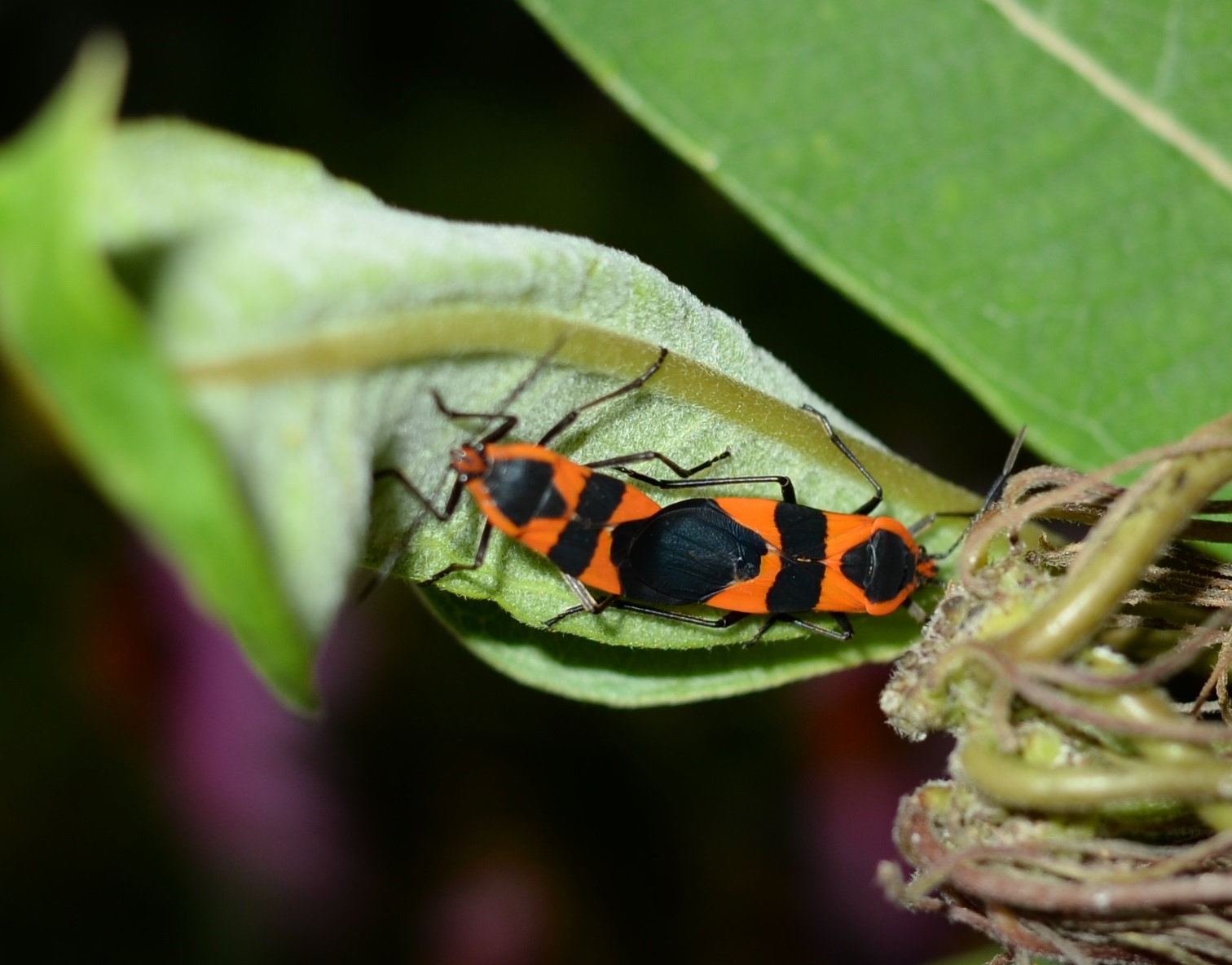
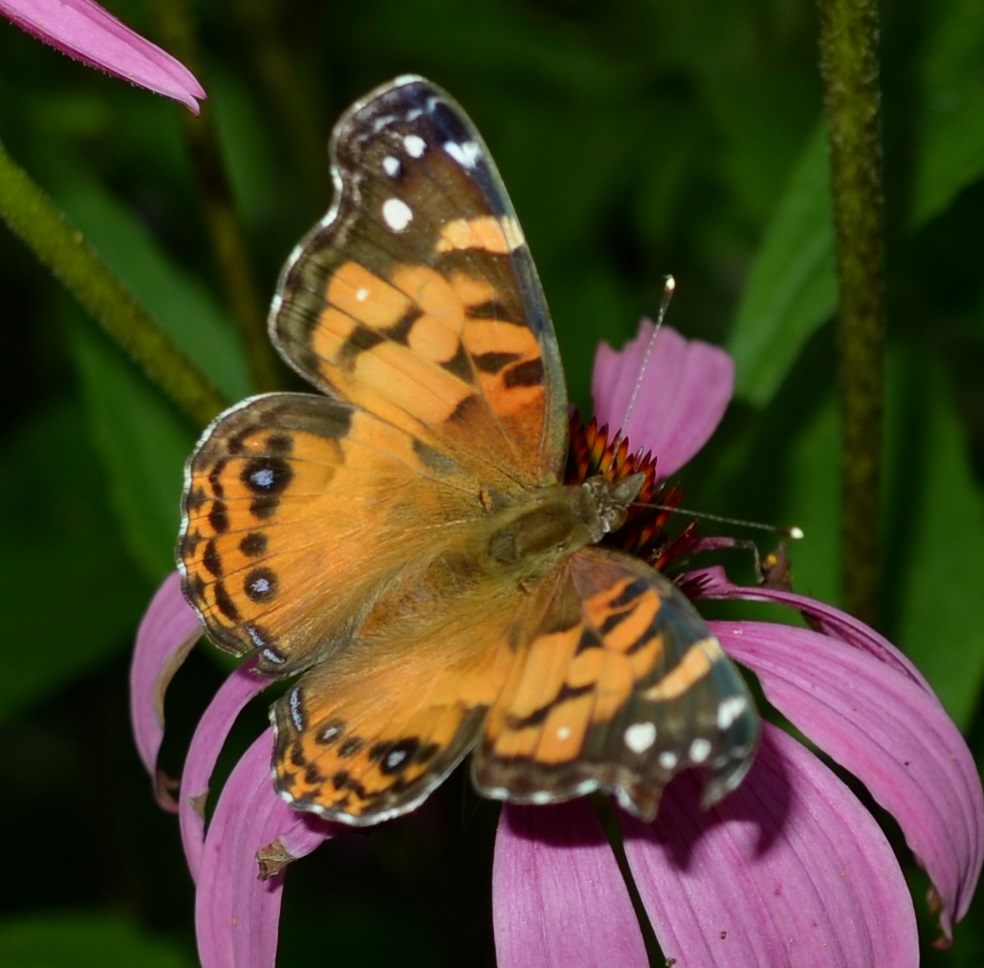
Let's talk about beetles a bit. (I didn't spot very many this week.) I got a very mis-colored shot of this Sexton beetle - the yellowish spots should be orangish. They belong to the carrion beetle family. Next is our old favorite red ladybird beetle, which seems to be eating some of the insects that did so much damage to the thistle leaves. Finally, one of those LBJ's (little brown jobs), this time leaning off a lily pad drinking pond water.
 7 19 15 2.jpg)
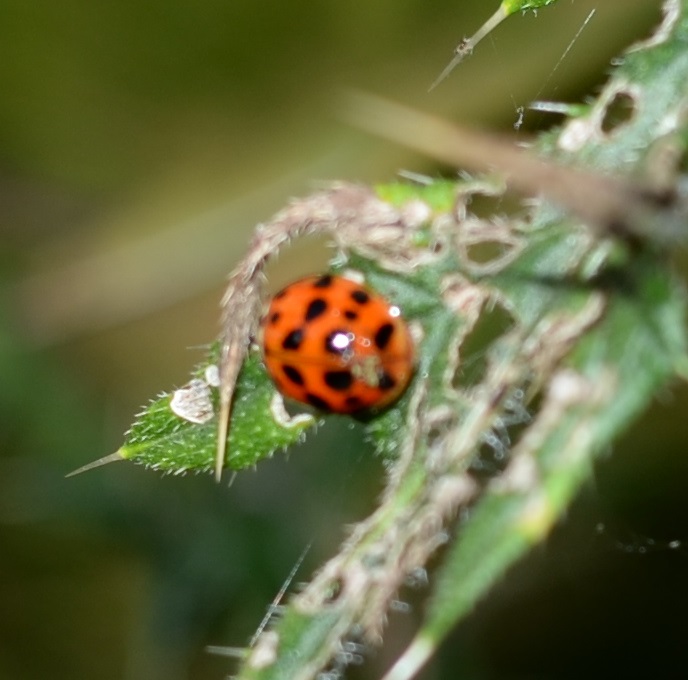
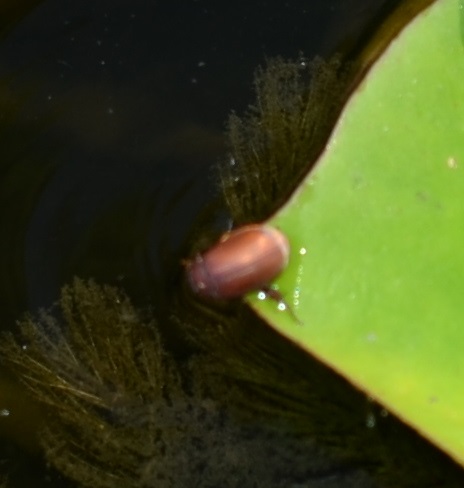
What were the bugs doing this week? Surprising me, as usual. Baby assassin bugs seem to be about. Yesterday I found a tiny green red-eyed one about half the size of the first one I saw this year. About a quarter inch long without the gangly legs. And today I found one that looks like the brown ones, also about a quarter-inch long. I was so surprised when it jumped onto my arm, just the right size for a mosquito in a suicidal mood. Fortunately I didn't whack it but took it to a better picture-taking place. This third one is an adult
plant bug of some sort, but definitely not an assassin bug. I haven't ID'd it yet as there are so many brown plant bugs around.
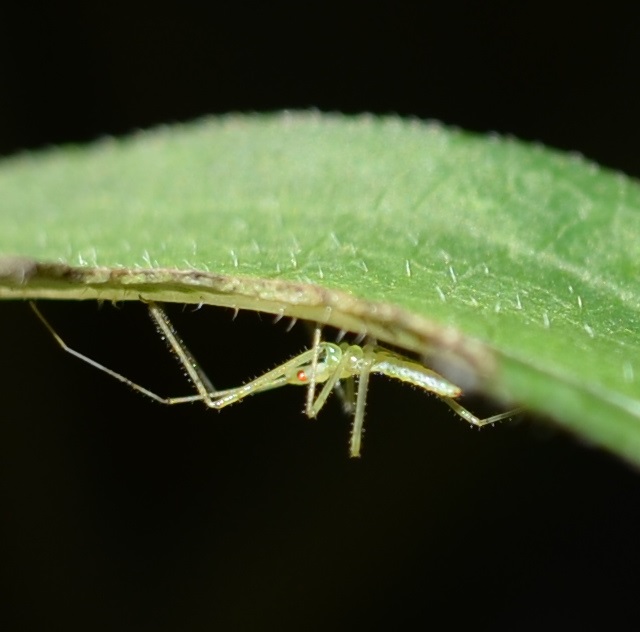

.jpg)
This next one is definitely a plant bug. (Yes, that's the name of these mostly plant-eating bugs.) And here's another of those thistle-loving treehoppers. It seems to have some kind of parasite on it. Unless that's a baby one from those things I thought were eggs!
This two-marked treehopper in the redbud tree seems to have exuded a couple of drops of syrup for some lucky ant. I'm still waiting to find two-marked treehopper eggs soon. Last year they looked like white scaly-bugs but they were eggs.
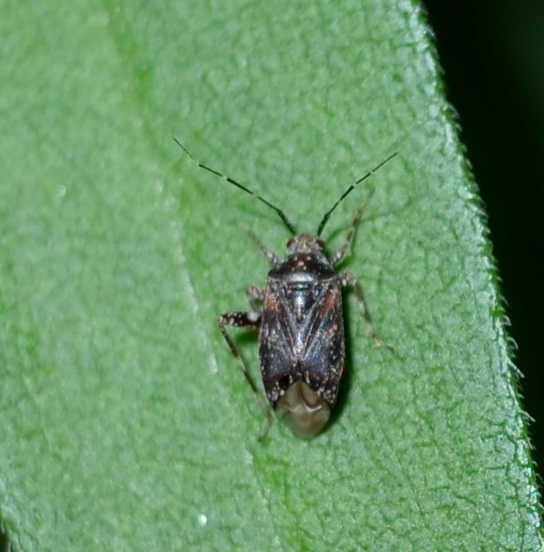
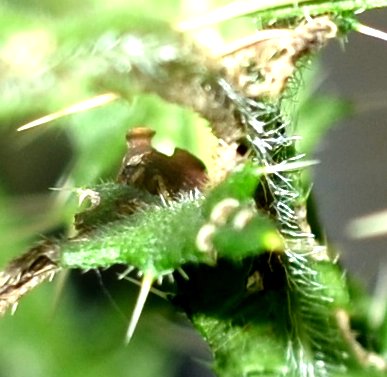
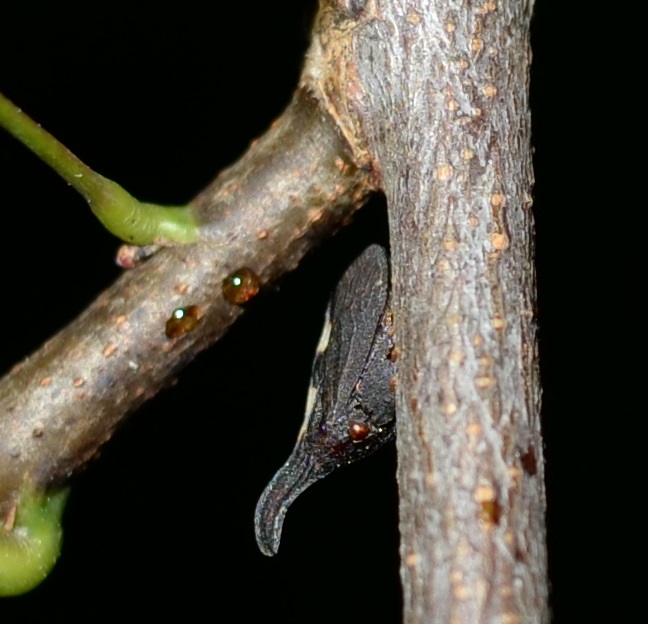
You already saw the painted lady butterfly, and I didn't see any other new ones this week, but there was a lovely white hairy caterpillar one day.
This one is called the Hickory tussock moth. I have no idea what hickory tree it came from. There was also a moth fly, that is, a fly
that looks very moth-like. Oh - and a big surprise! A friend came by with the most extraordinary real moth. It is called the Giant leopard moth - it's covered with open circles that look as if they were printed on there.
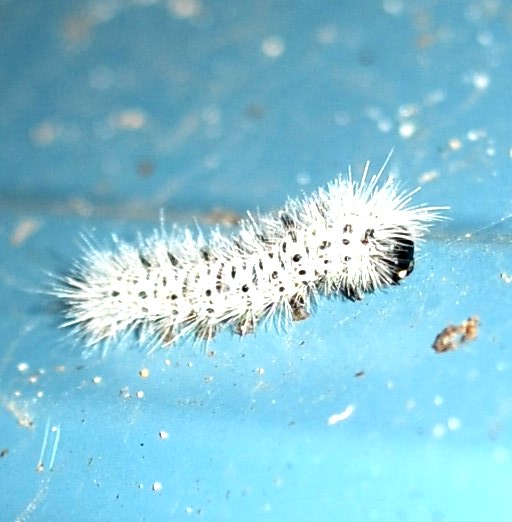
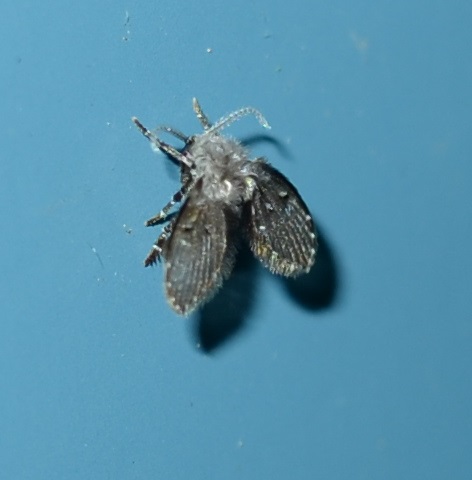
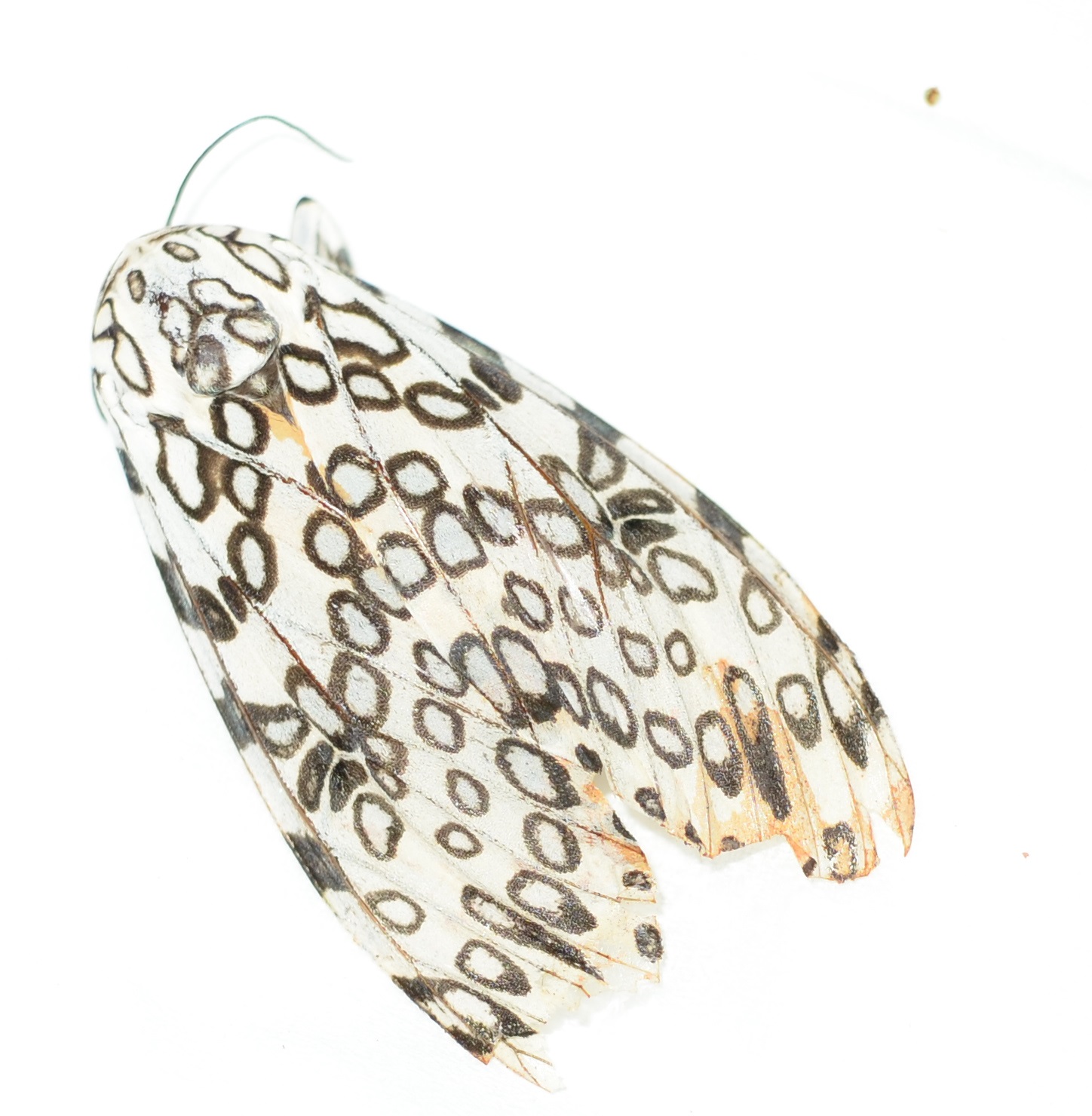
It was a pretty good week for damselflies. This little bluish grey one was squatting in the pond carefully laying her eggs into some floating plants. And a new one, a brownish one not much more than an inch and a quarter long. Oh, yes, one of those exquisite male ebony jewelwings came by to visit. I love the electric blue-green so much!
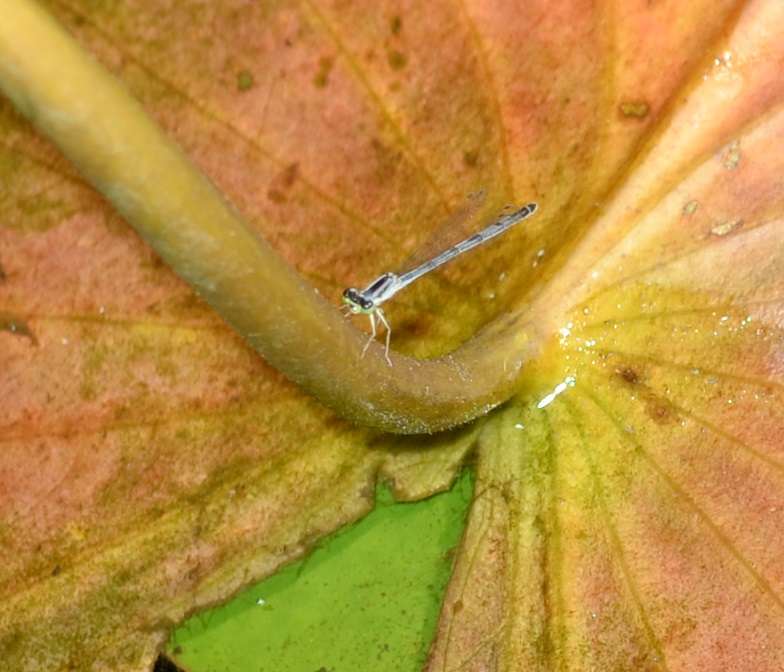
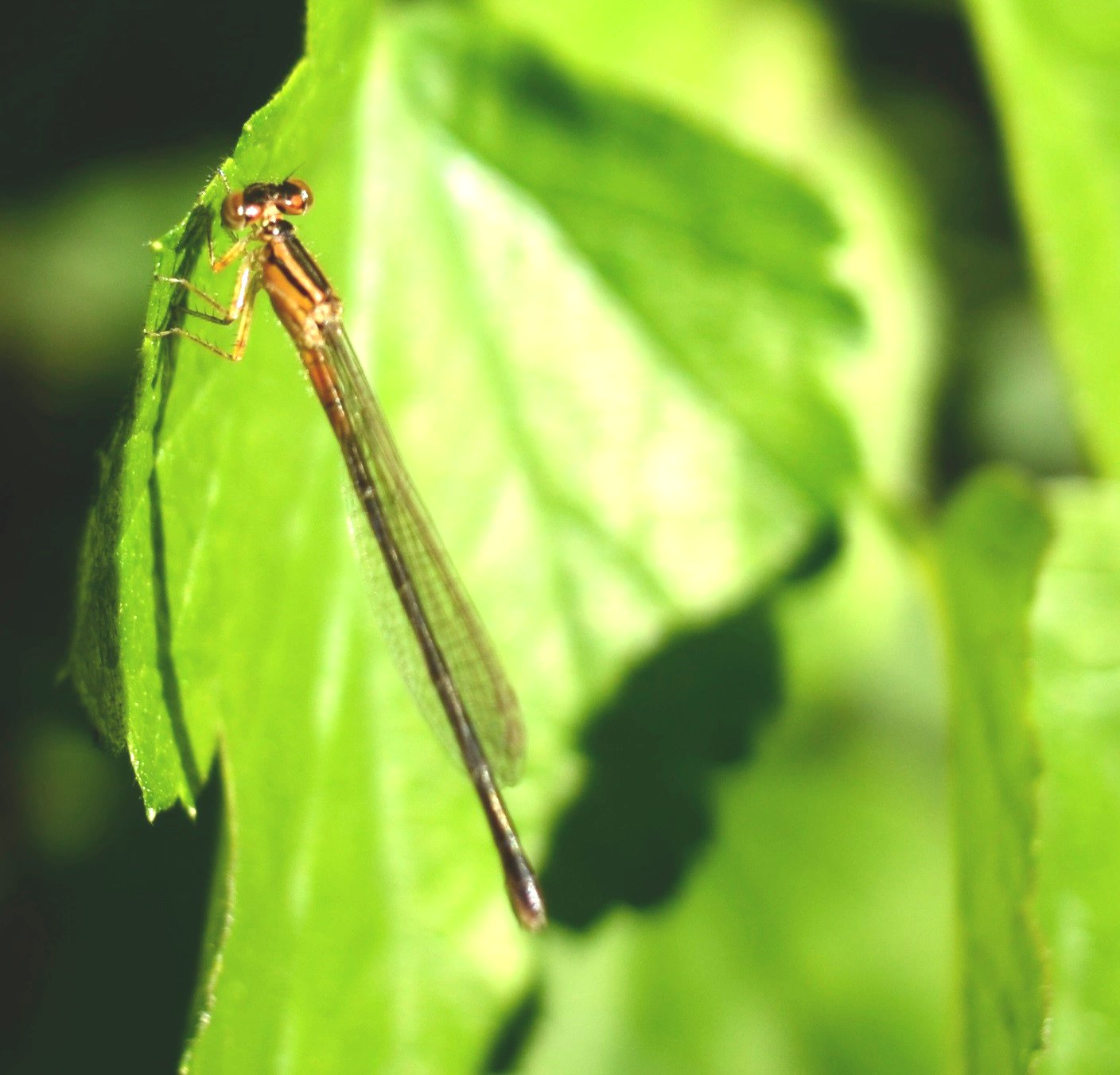
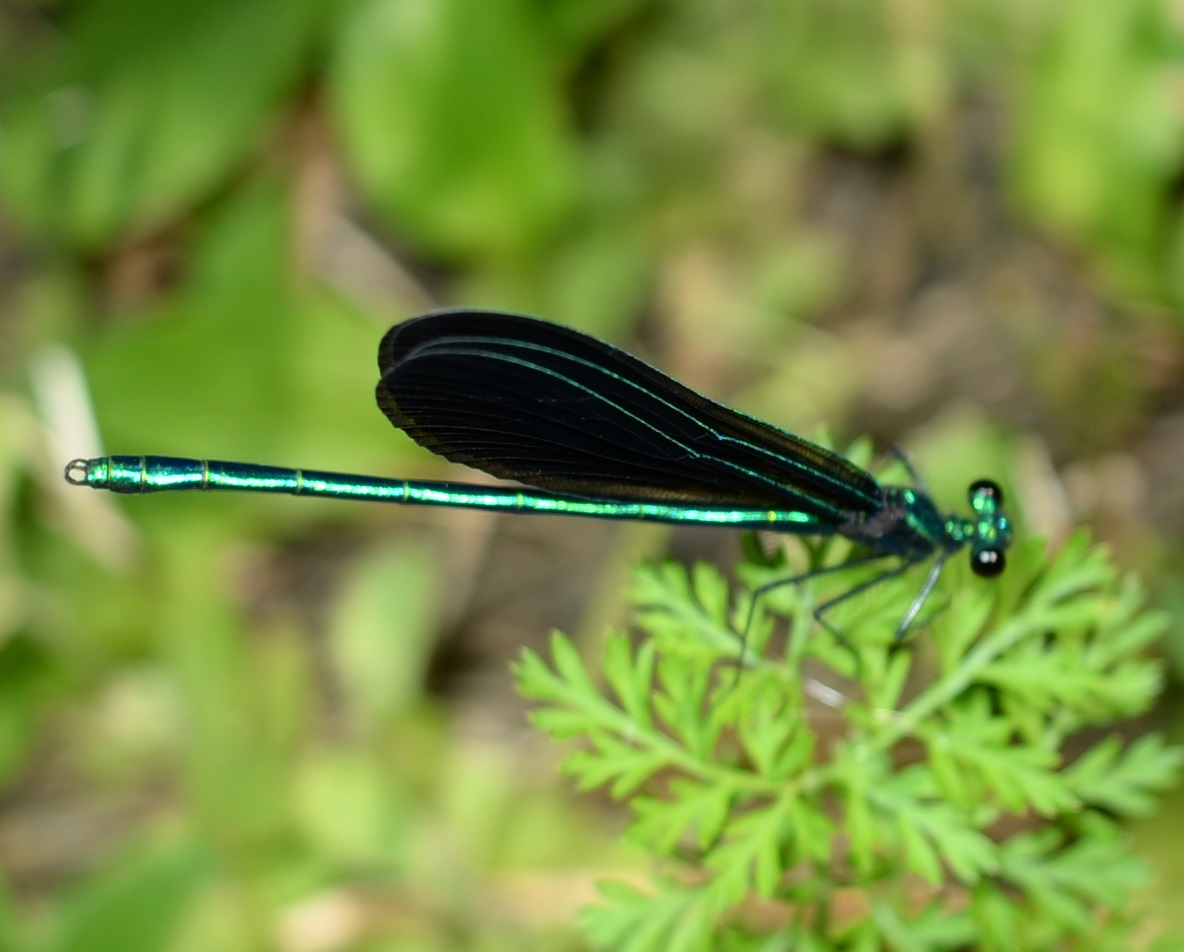
Only one dragonfly - the one you've seen before - the orange-brown one whose mate will be red if we ever see one. We will soon, I'm sure. They stuck around a long time last year. But we had this surprise. I always think earwigs are just boring brown. But this one has some white markings and turns out to be a European earwig. They seem to be well-distributed here too. Here's a new crane fly. Look at its wings. Doesn't it also look as if the pattern is printed on? Just look at the length of those legs.
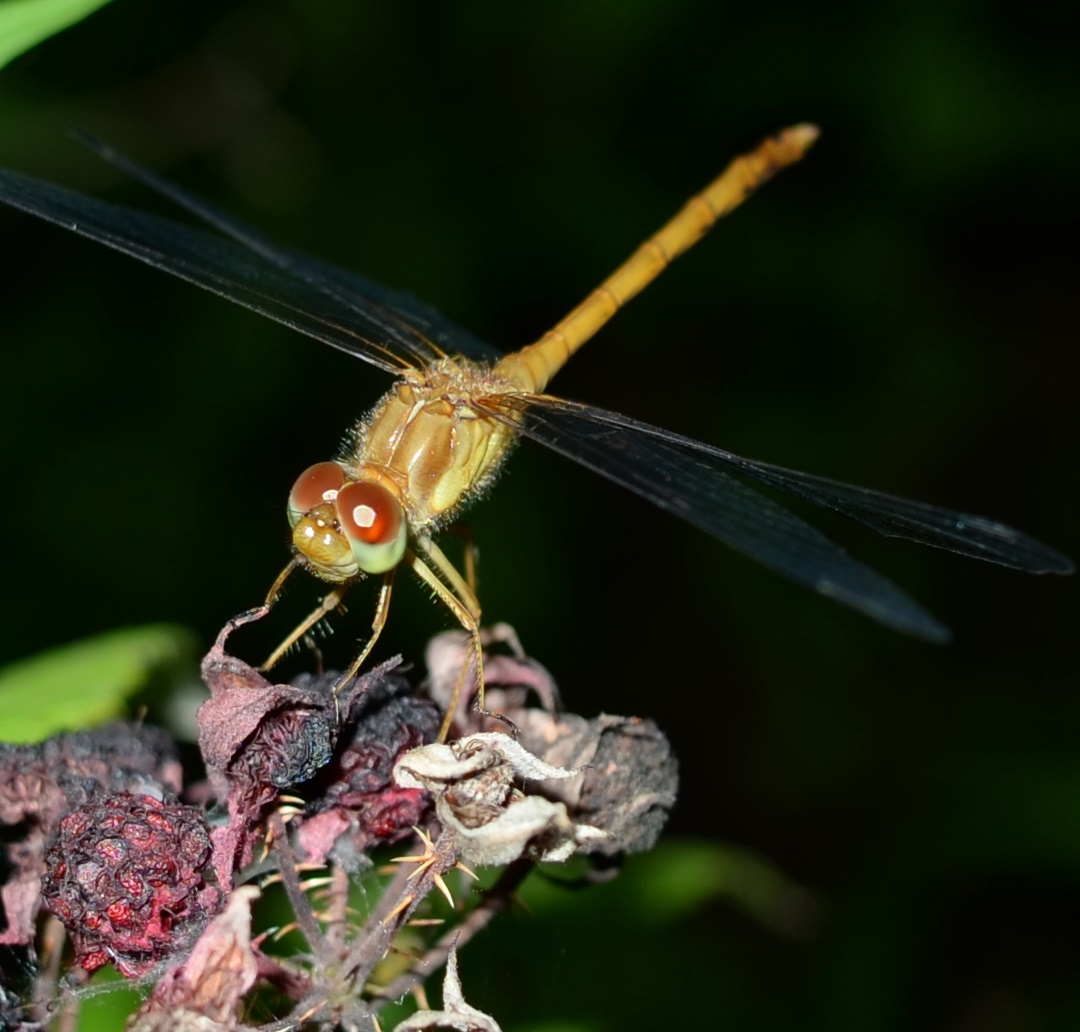
 in cone 7 20 15.jpg)
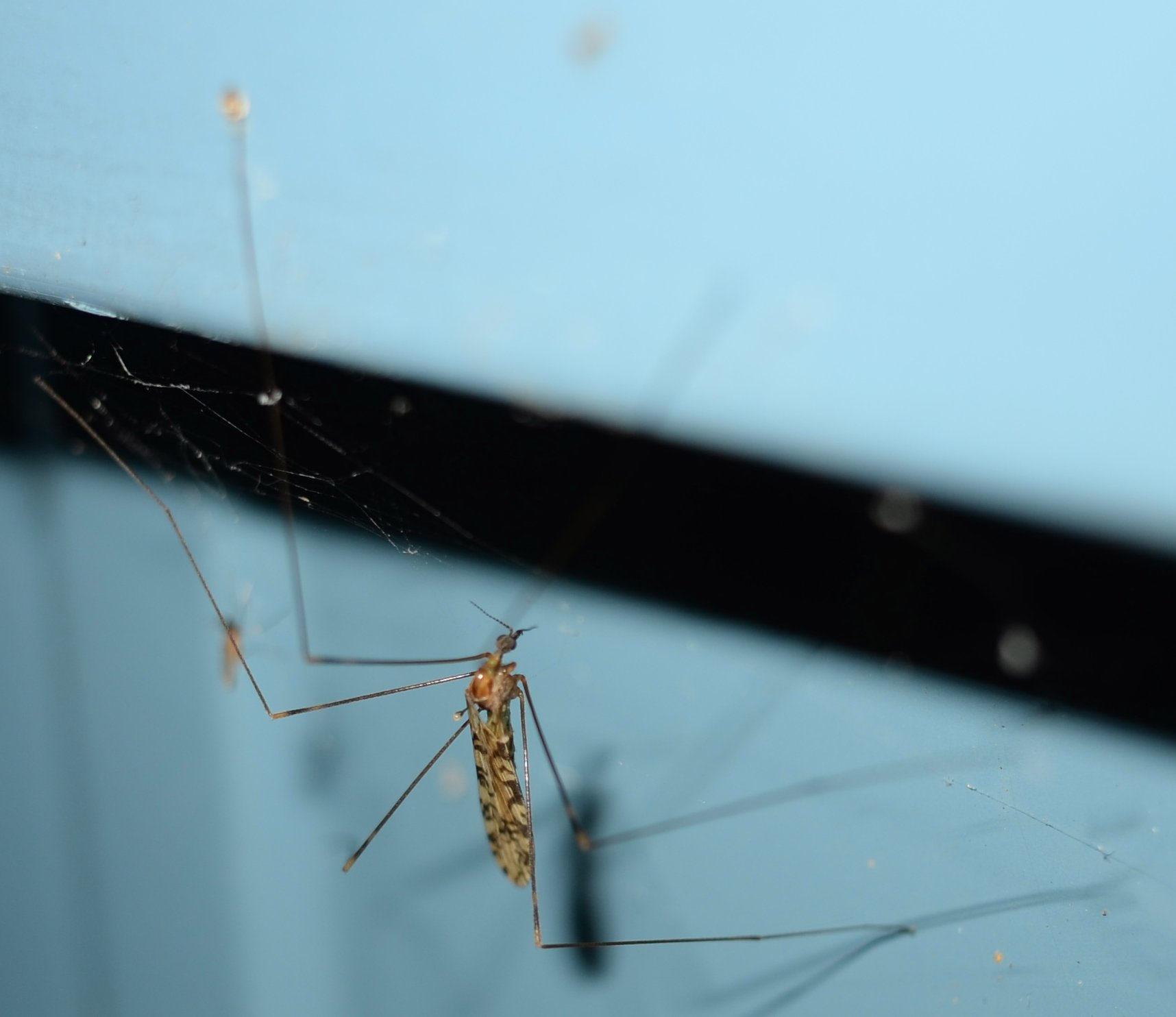
Speaking of long legs, the harvestmen (Daddy-long-legs) are all over (I mean they are all over the place, not gone)now. They come in various colors and patterns, but the major trait is that their legs are truly enormously long. Here are two different ones, but both of them have legs that won't quit. Like some of the spiders. I'll come back to them, I promise.
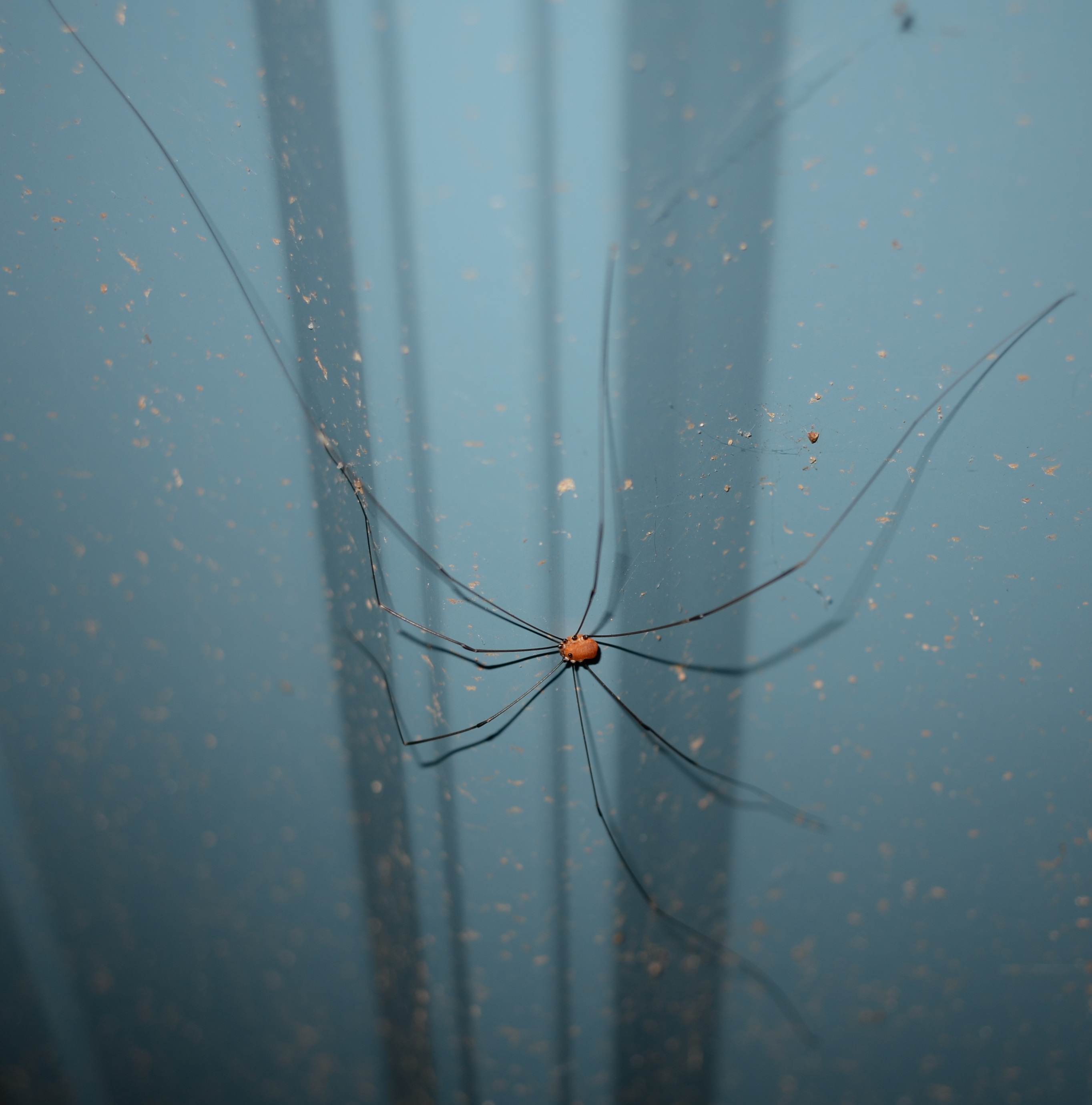 ;
;
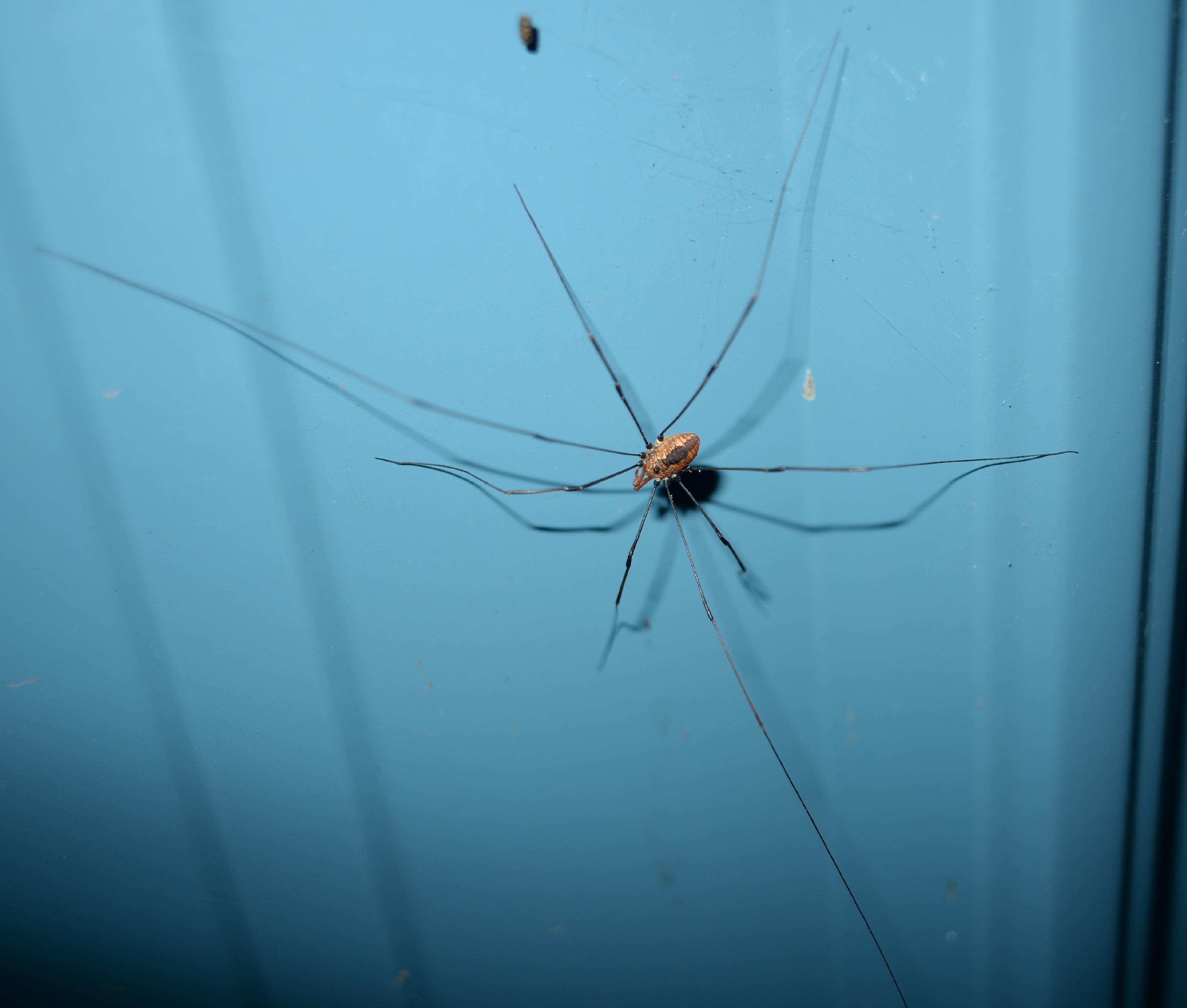
But first a break to just fill up your cup and sit back and look at flowers. You probably think I have a wonderful garden full of plants burgeoning with flowers. Actually, any one plant this year is only showing one flower at a time. That's why I bunch up the single blooms.
This day lily is called Frans/z? Hals, as I recall. This lily (a real lily) had exactly one flower this year, but it was a good one. The morning glory was over at the prairie garden.
;
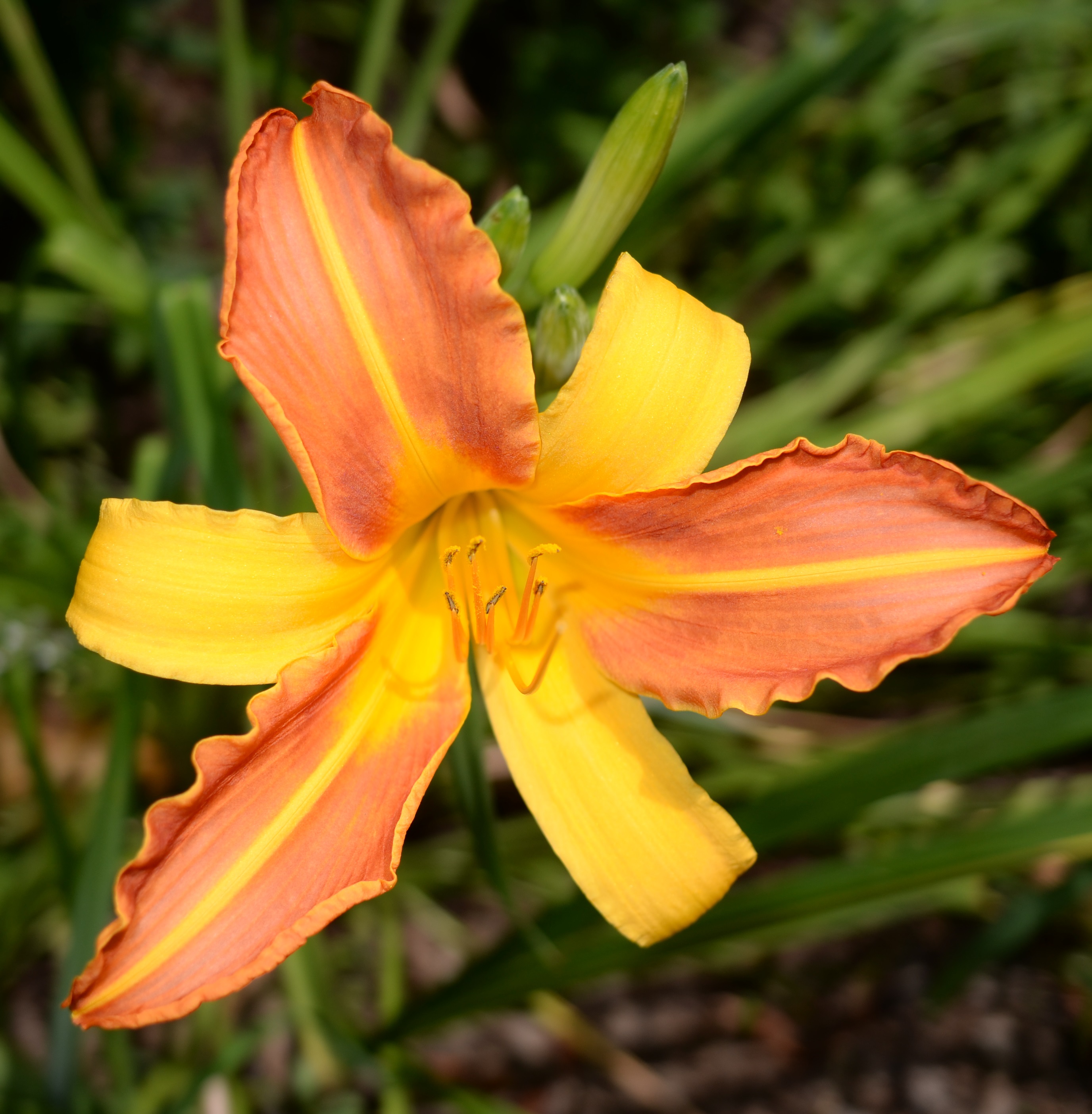
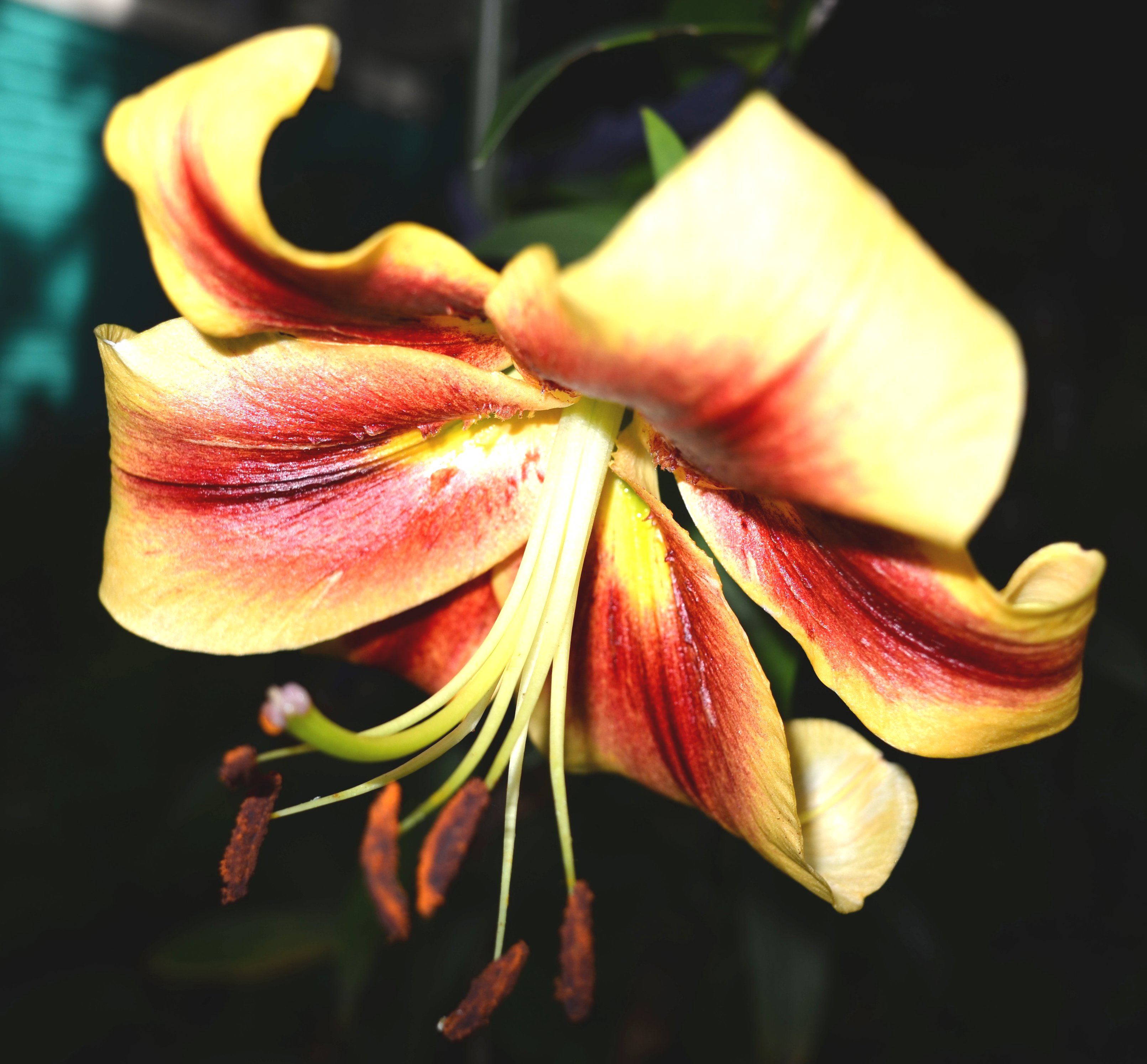
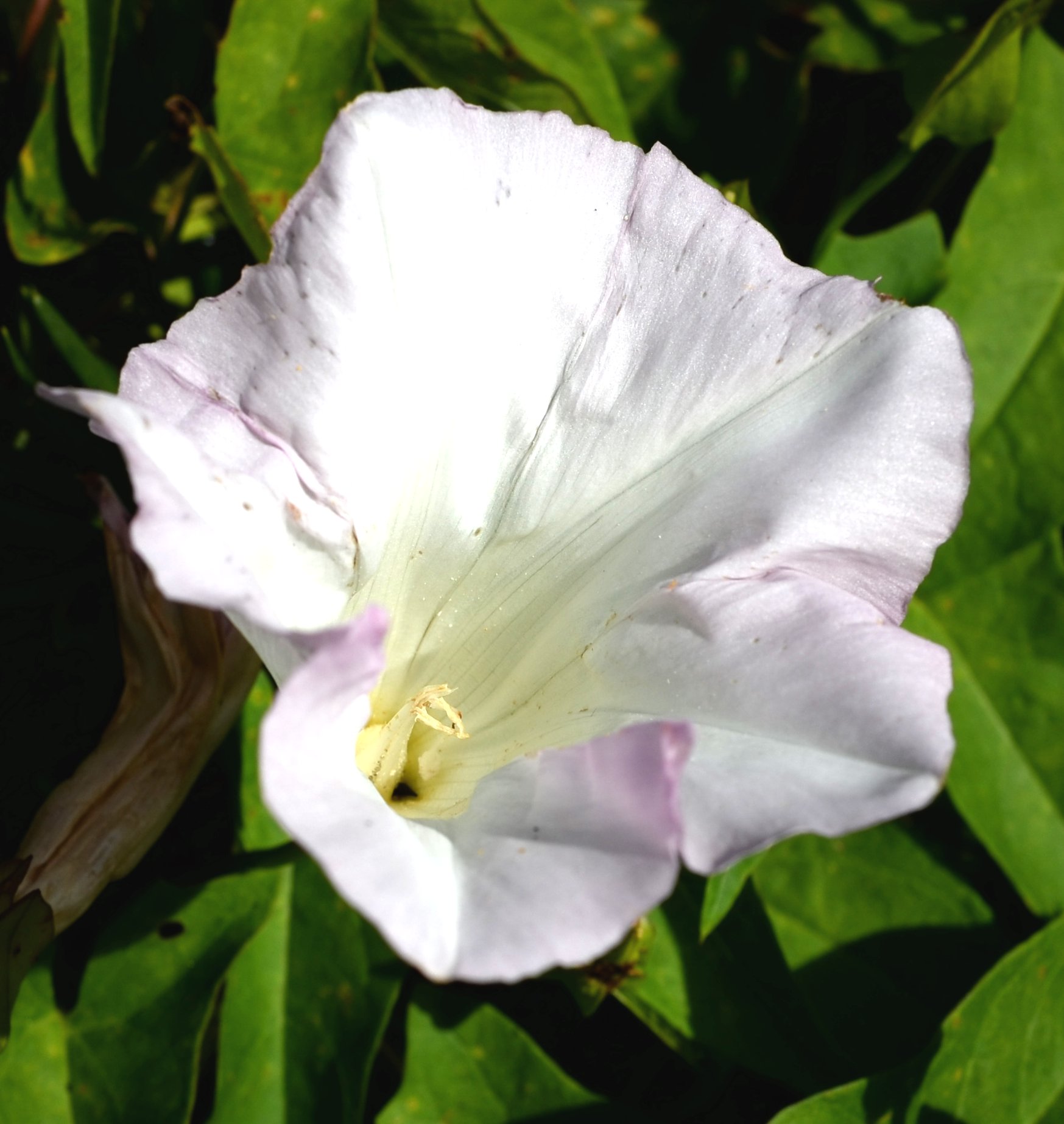
A brown-eyed Susan was a survivor from last year. This is how it should look soon. A single Queen Anne's Lace plant volunteered from somewhere. I'm always glad to see it because the Black Swallowtail butterfly lays its eggs on it and the pretty caterpillars love it. I
hope it will spread for next year. No, that black dot in the middle of the flower is part of the flower. The bladder campion is one of a large family of lovely plants. It's called a bladder campion because of the large air-filled bubble under it. I'm glad to see that it survived the big dig last year, when they were building the shop.
;


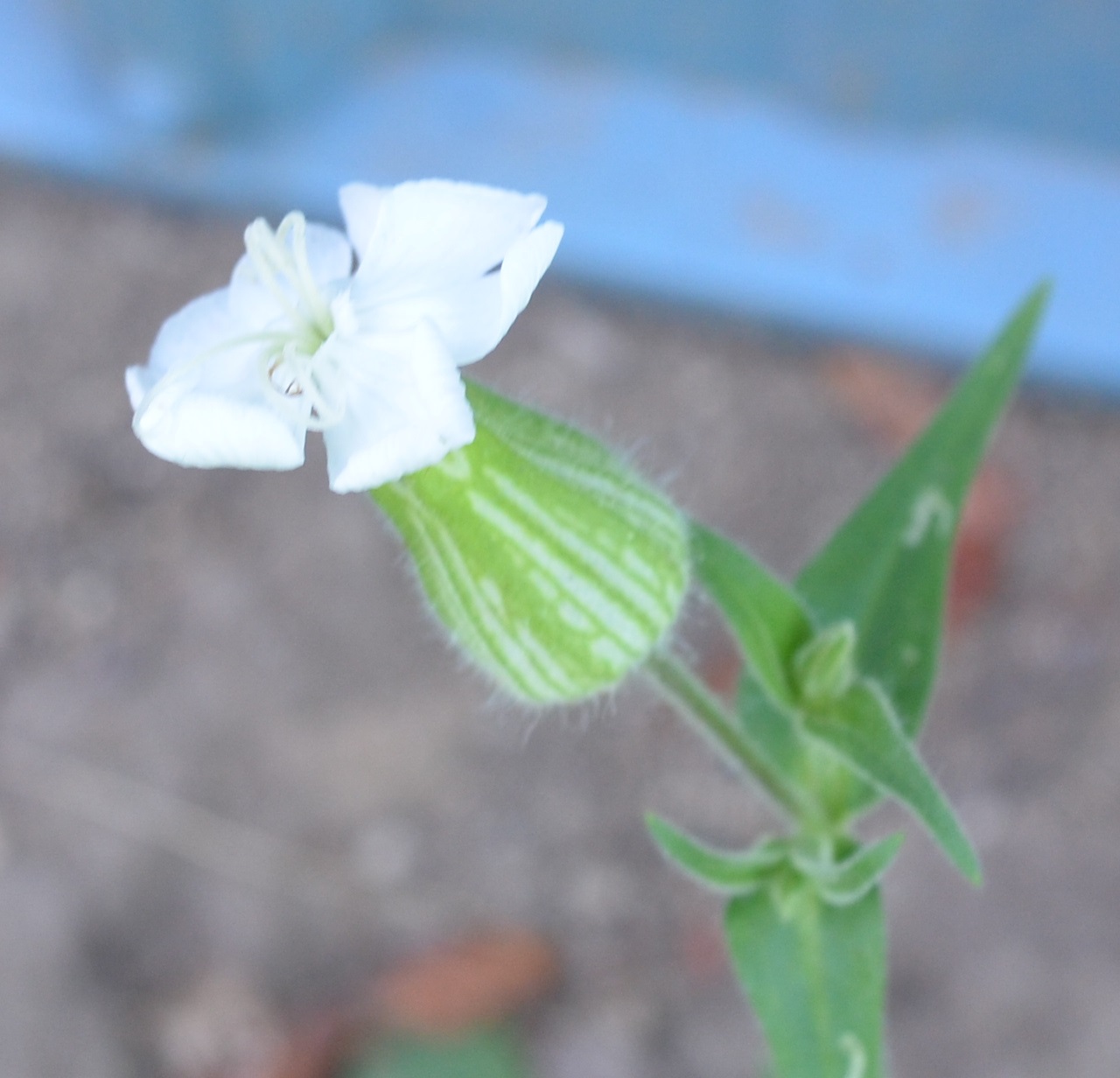
Before we move on to your favorites, the spiders and the flies, let's see how many new bees we found this week. This mystery bee, which may
be a cellophane bee, appeared and disappeared just fast enough that I got one lousy shot and one good one- of its butt. These green sweat bees are very skittish - but isn't that color amazing?

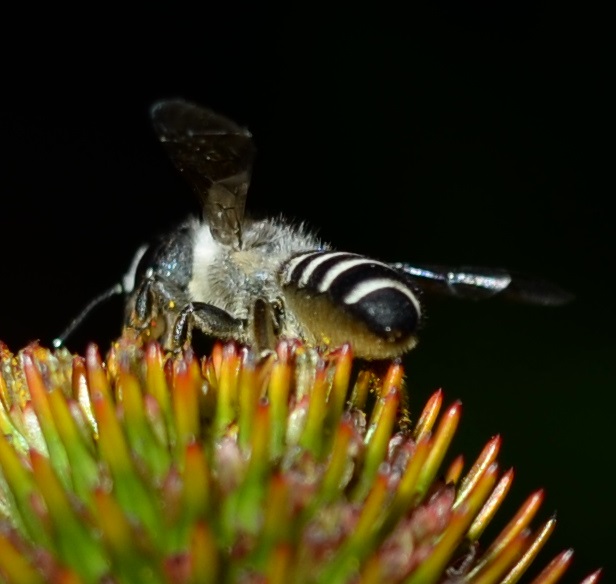
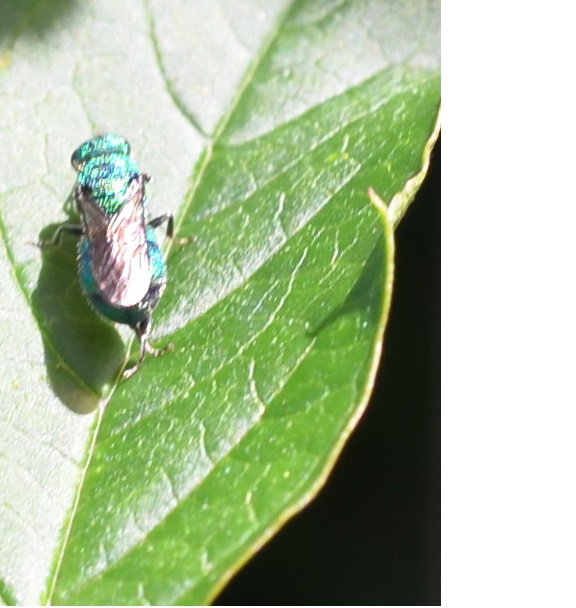
Just a few more mystery bees. This little all-black one is diving into the rose mallow. And the bumblebee, which you have seen before, is just so fixed on his supper. Here he is holding onto the plant with his back legs as he rests up before sticking his whole face back into the flower. The tiny yellow-legged bee is carrying pollen from all the flowers he visited lately. He really loves his flower juice too. These bees covered in pollen are our amazing pollinators.
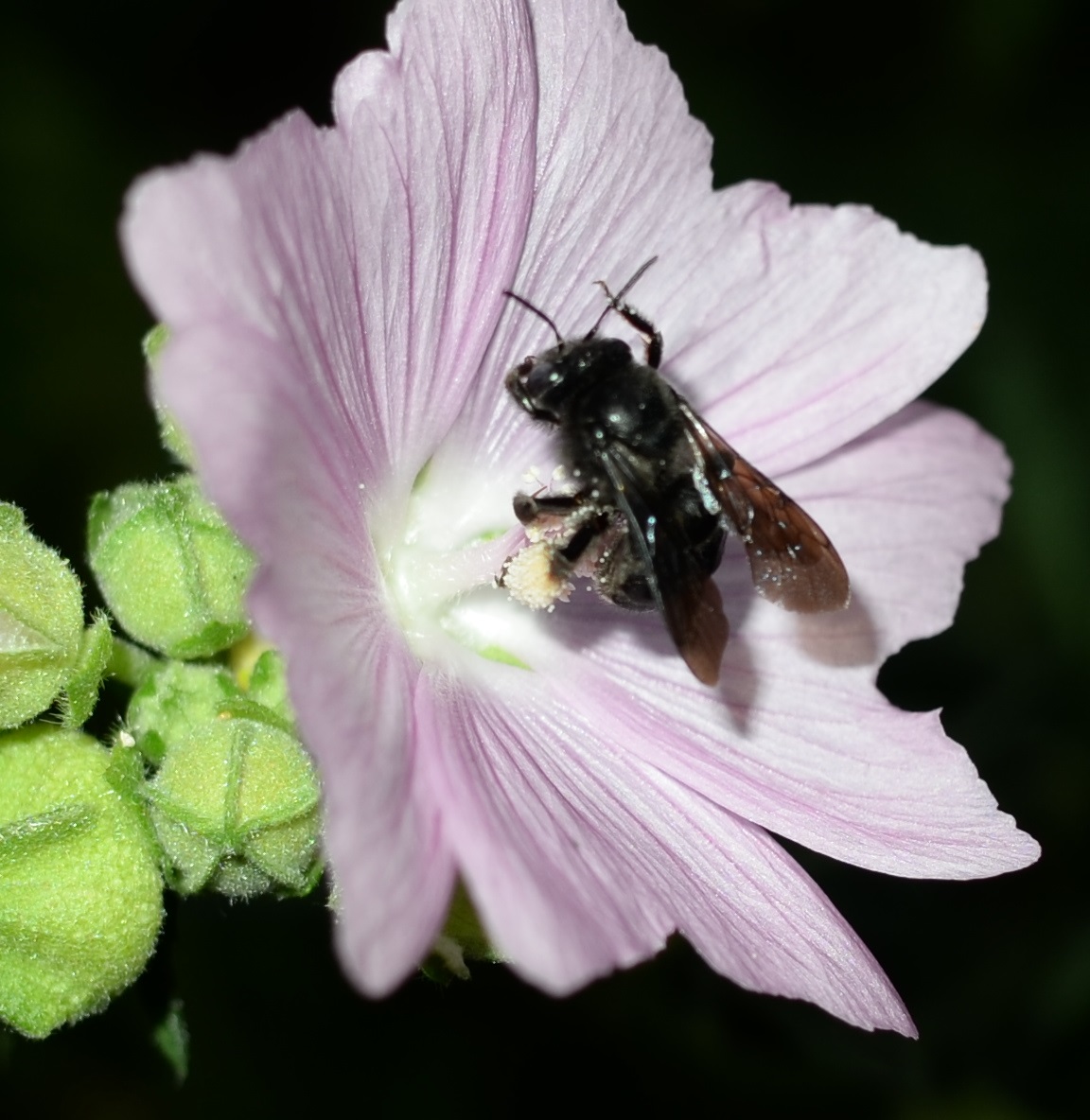
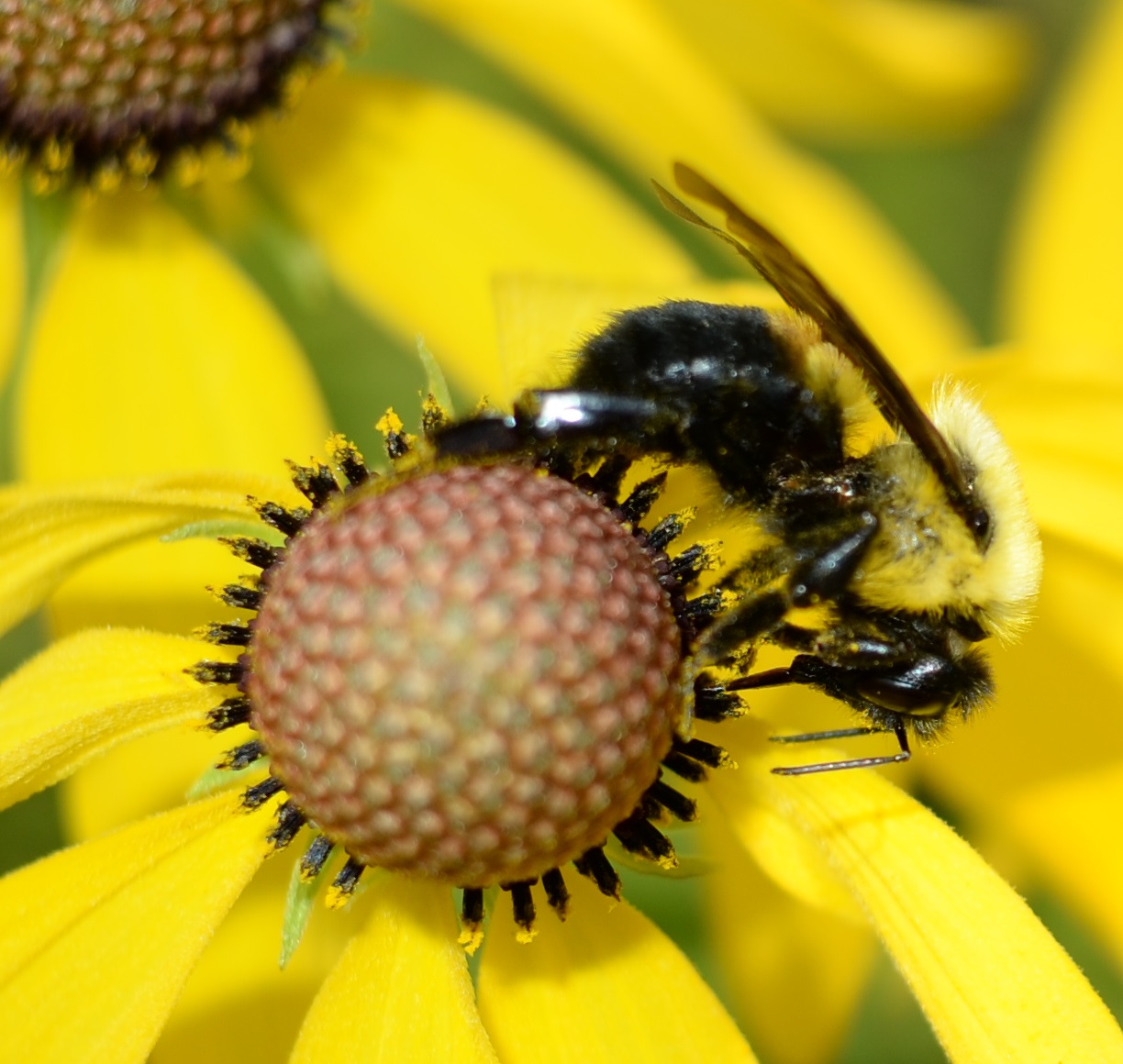
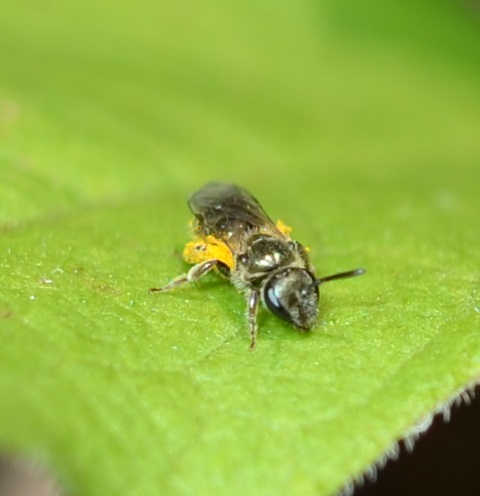
While we're in the Hymenoptera room, I saw a number of brand-new ones. This (probable) ichneumon was so bold in its black-and-white stripes but so nervous that I didn't get the best picture, but here she is. Pop quiz: why did I call her "her"? This next red and black one was a surprise when I found it after a fairly empty afternoon bug-wise. Now I've probably whined to you about the poison ivy that was rooted so deeply I couldn't pull it all out. Well this wasp? bee? None of those searches worked, so I finally submitted it to Bugguide.net. Within minutes it was identified - as a POISON IVY sawfly. See, you need some noxious weeds to attract the good stuff. I'm perfectly happy to let it gnaw on all the poison ivy it likes! It seems that every plant has some anti-plant, a bug that likes either to eat it or to lay its eggs on it and let its babies eat it.
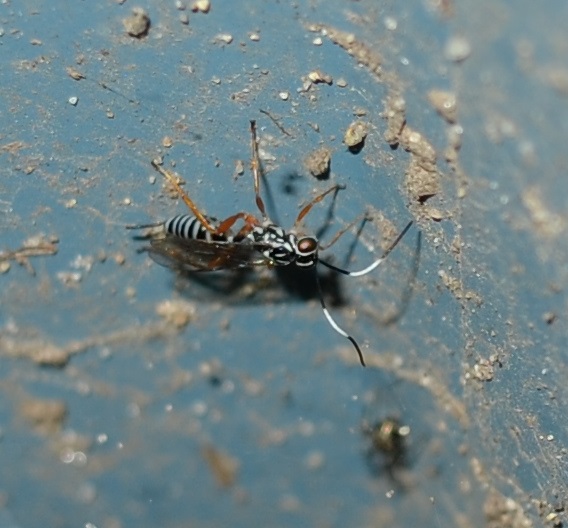
 7 19 15 4.jpg)
 7 19 15a.jpg)
Last week I showed you a mayfly that someone had brought over to ID. Well, this week we had our very own mayfly. It ssems to have been born fairly recently and is trying to free itself of some packaging. It was thrashing like this. You know that they only live one day and I'm thinking this was the beginning of its big chance to make good. Remember the katydid nymph from the deck? it was in a potted zinnia. Later I saw this one in the tiger lilies in the weed patch. I'm fairly sure this is a different individual. It is a female!
Here is the evidence. That scimitar at her rear is her ovipositor. Remember, that's the thing she uses to lay eggs deep into something.
I think I'm out of the random examples. We'll head for the flies next on our way to the spider house.
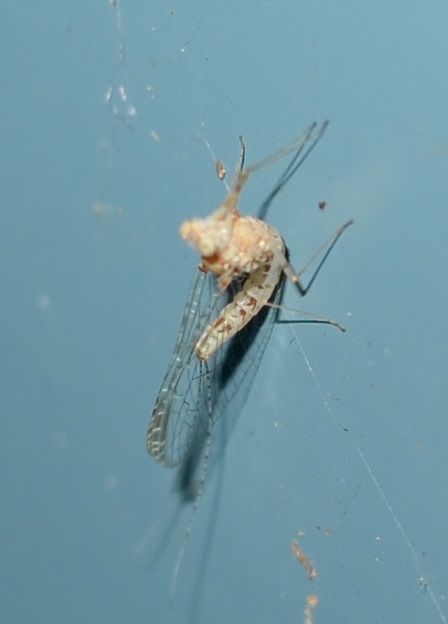
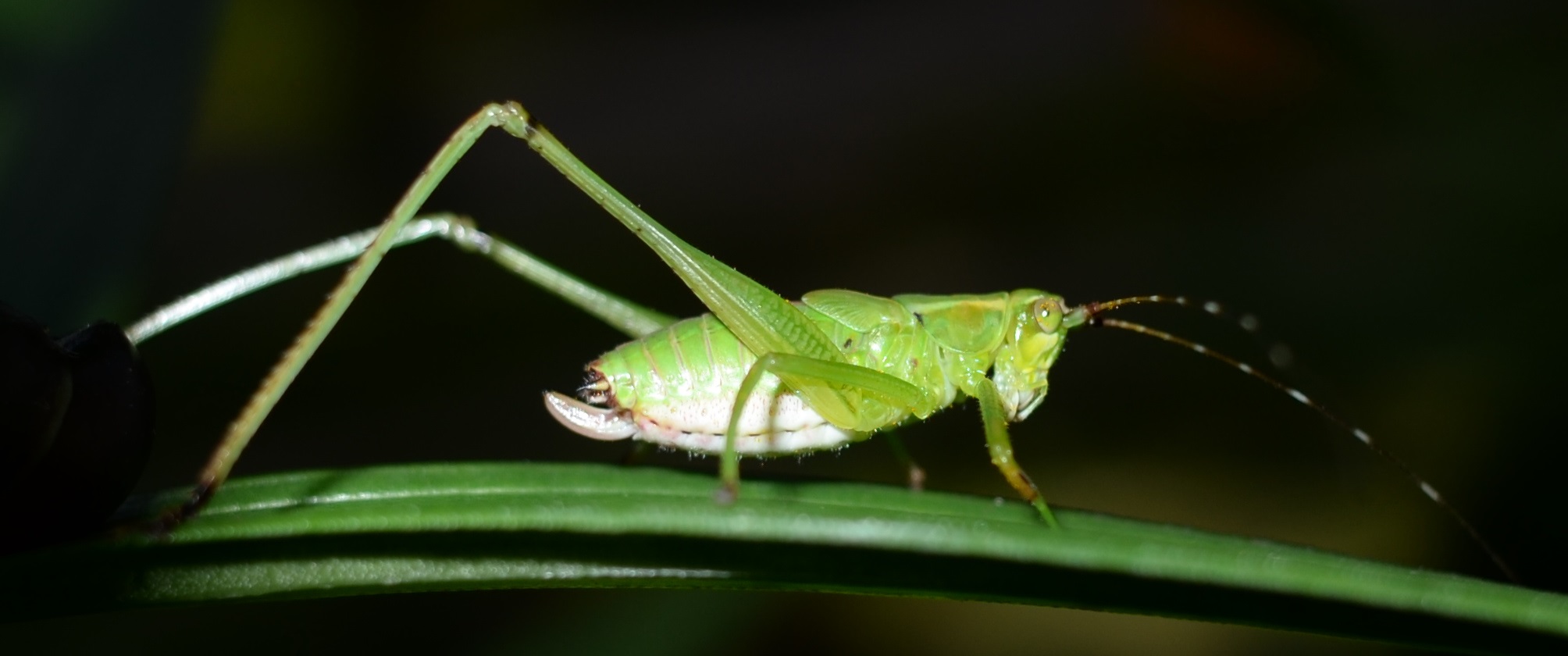
Flies. More flies. At least some of them are pretty, but of course not all can be. Here's a cute one with a huge belly. (Maybe she's pregnant.) The next one is unidentified but looks a lot like that pretty orange one that used to come around. The next one is probably one that most people would relegate to the swatter. but who knows, maybe it knits pretty patterns out of weeds and sells them on the open market.
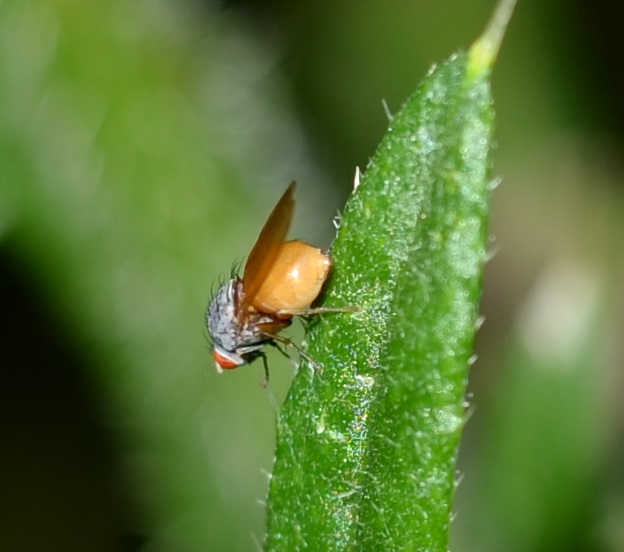
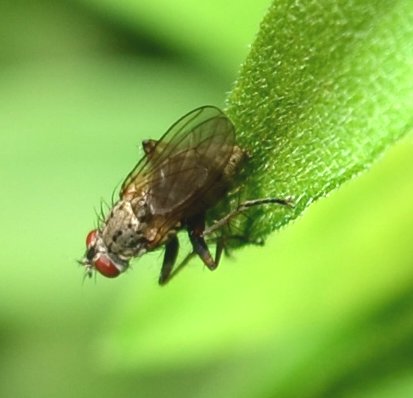
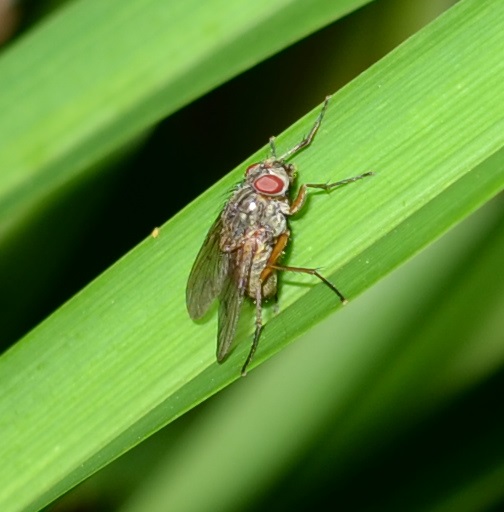
Here is the one picture I got before this charming fly in see-through black wings took off. It's called a tiger bee-fly. The big robberfly
in the next picture had its mitts on an unidentified (by me) wasp or relative. I came back after just a few minutes and the robberfly had relinquished its prey or simply decided it was dead enough it wouldn't wander off. I moved it to a better spot for a picture (and put it as close to back as I could). It was decidedly dead. This last insect had me thinking wasp? ichneumon? But right now I'm thinking it just may be a very small robber fly. What do you think?
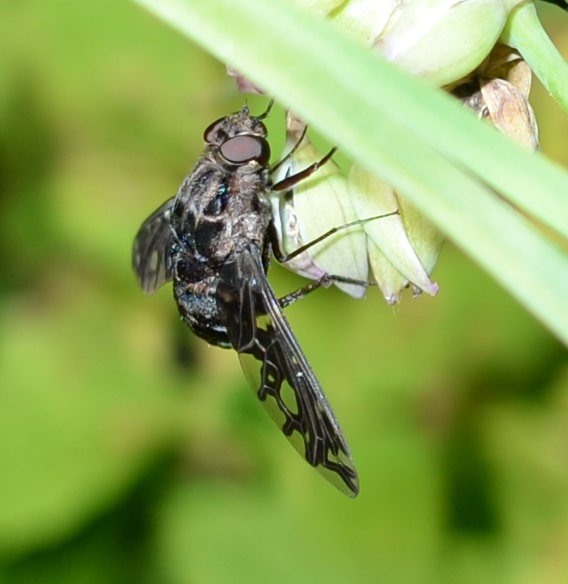
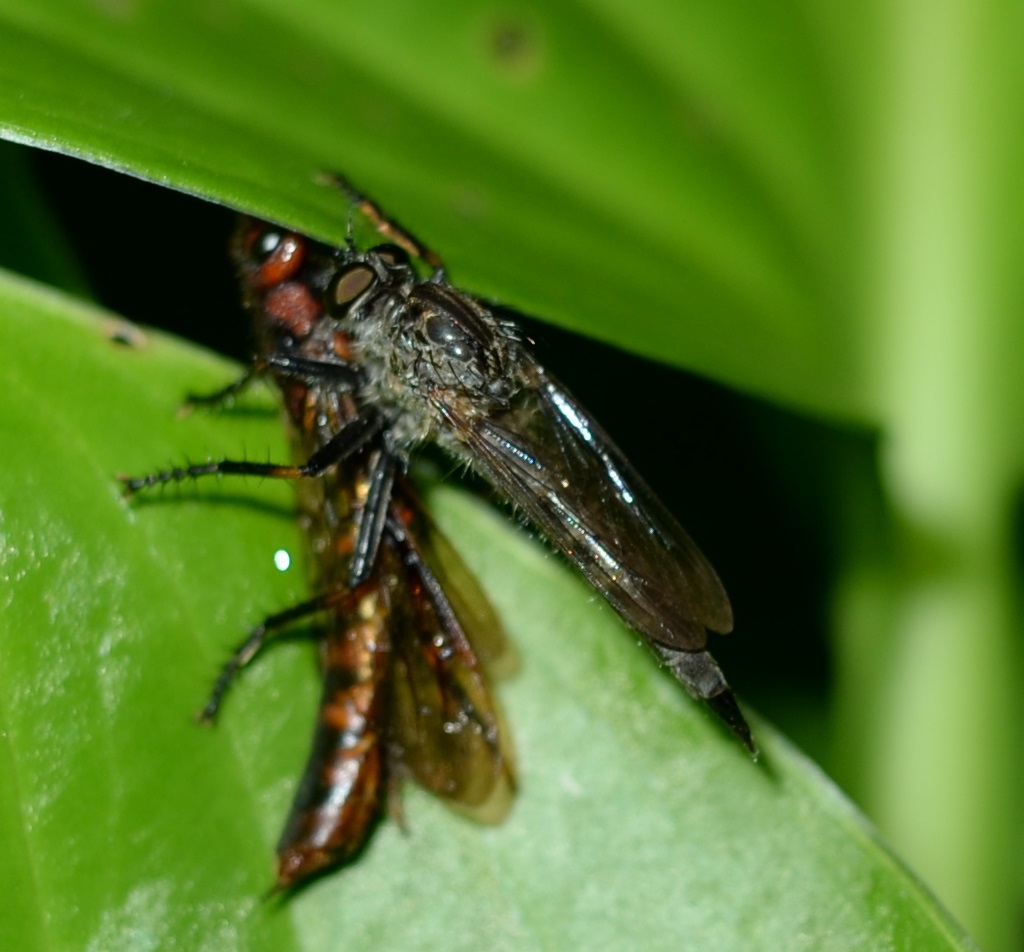
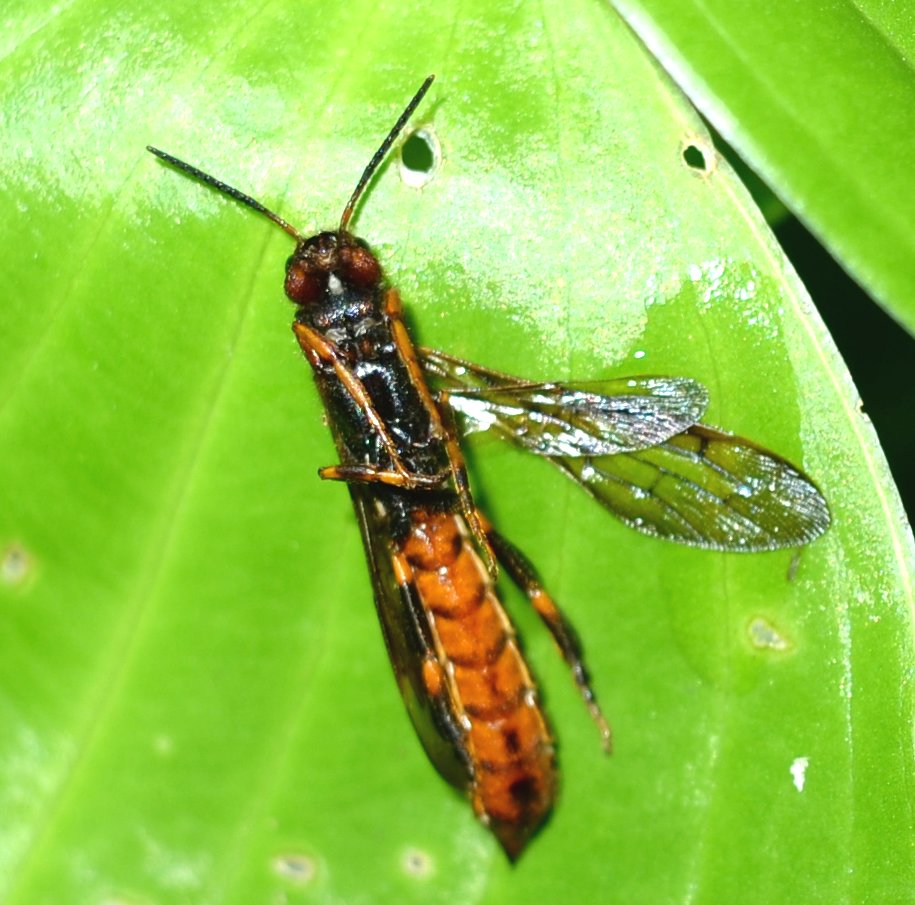
 7 22 15.jpg)
All right, now you deserve the spiders. There have been a few with quite spherical abdomens. Very handsome spiders. Trouble is, they are so nearly the same size I can't be sure they are not similar individuals at different stages of development. Here's one I've been seeing for a couple of weeks. Its back has streaks of greenish brown. The next picture is a side view showing its wide tummy stripe.
On the 23rd, I found in the asters this shy orbical spider. It is right up my alley with purple AND green designs on its balloon belly.
It was busily preparing a prey insect but backed off when I got too nosy. The next pictures show the spider in all its finery and the prey, which seems to have been trying to get out of an old skin. You can see its big eye behind the "skin". You realize that is all speculation. This may be my favorite spider in a long time.
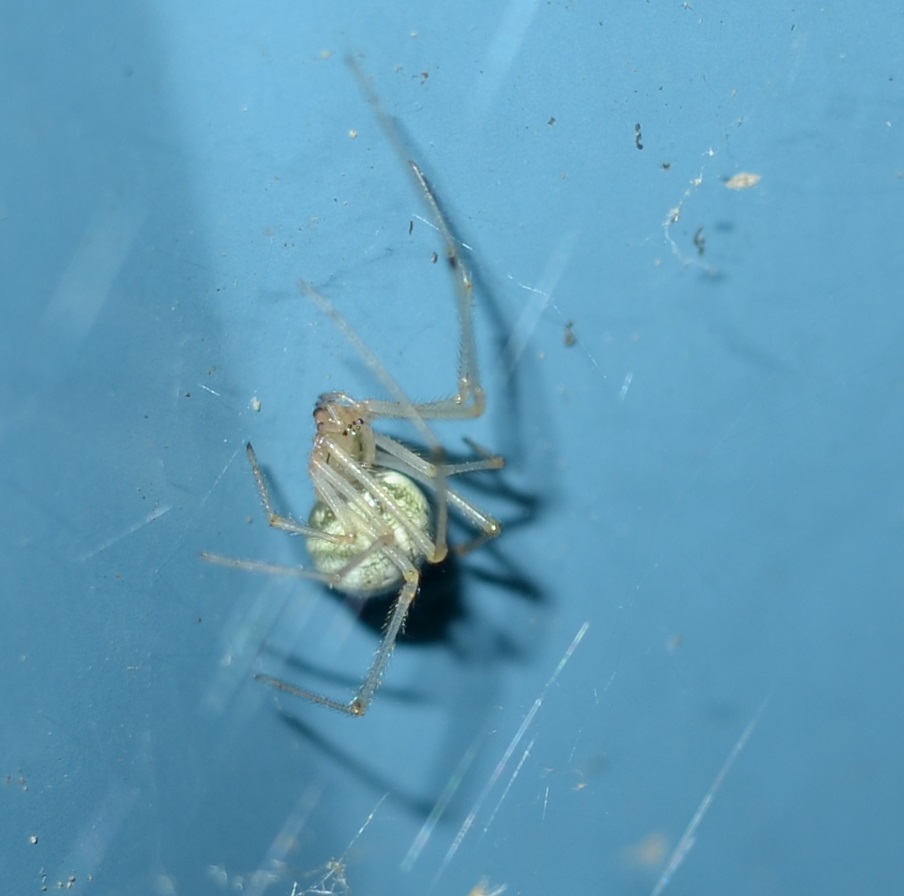
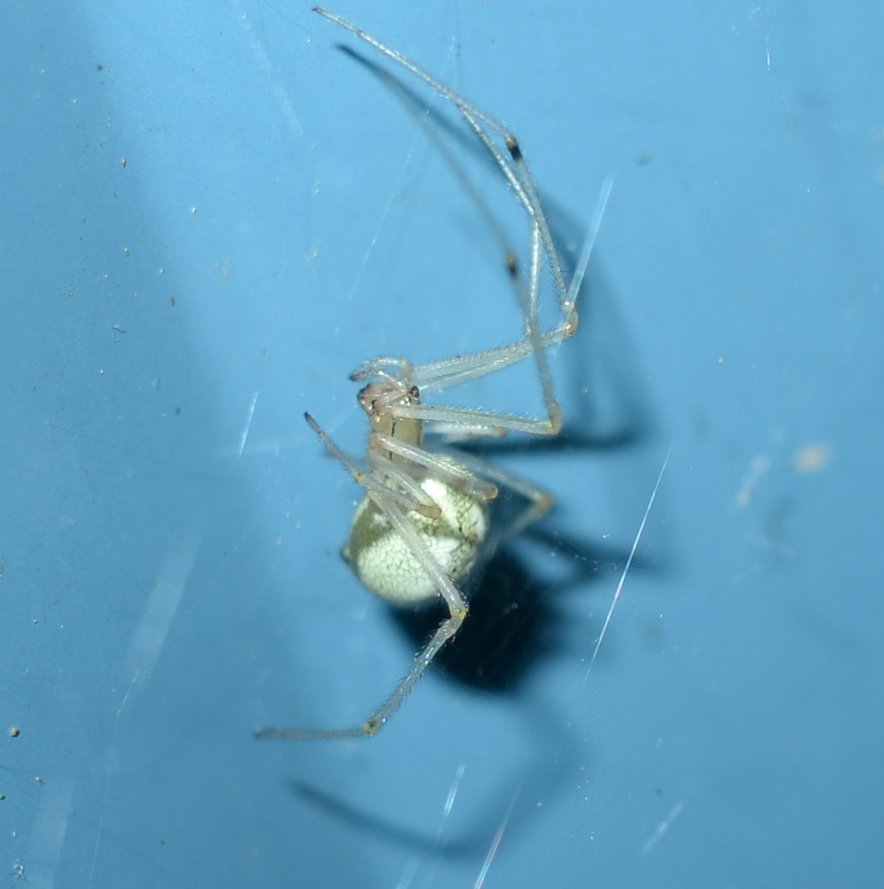
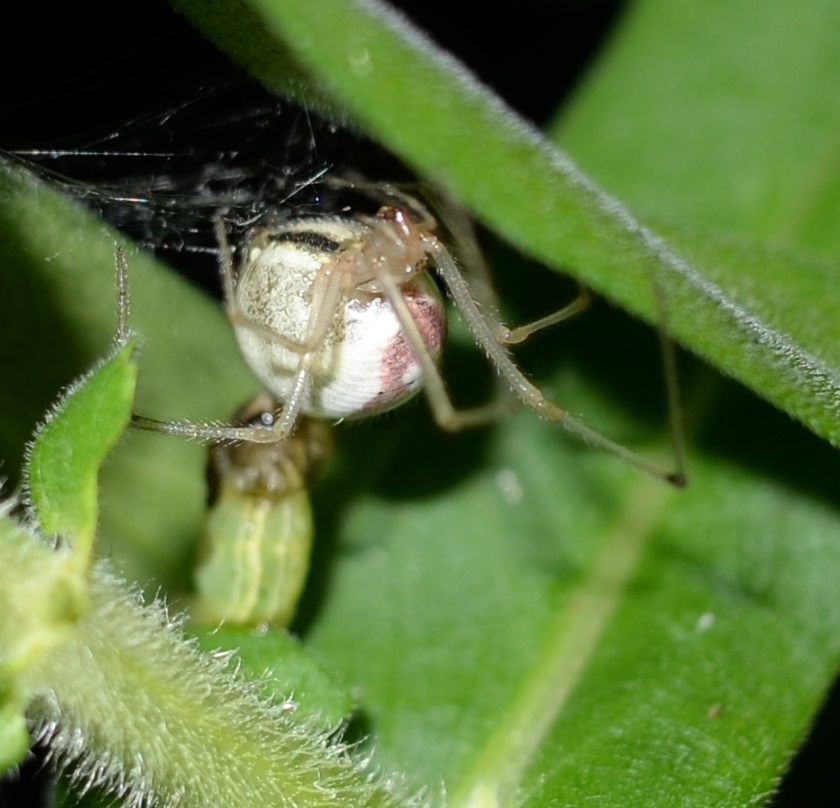

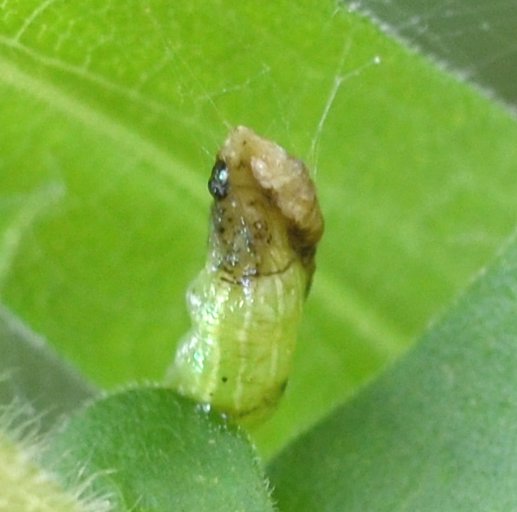
Finally a picture of that tiny cross orb weaver, this time showing its back. Nature seems to enjoy installing faces on his/her spiders.
Notice the two big eyes on the back? Maybe that fools someone into thinking that is the dangerous side. The next and last new spider is one that seems to be the major player in the spider game. They are really all over the place. Tnis showed up on my kitchen counter next to the sink chasing a little ant. I know it is better not to have ants, but this spider was over a half-inch long, and so I scopped it
up and took it outside. It will find lots of friends. They make little tunnel nests, and sit waiting for visitors.
Oh my. Here is one more tiny toadlet leaving the swamp, as I must leave you for a while.
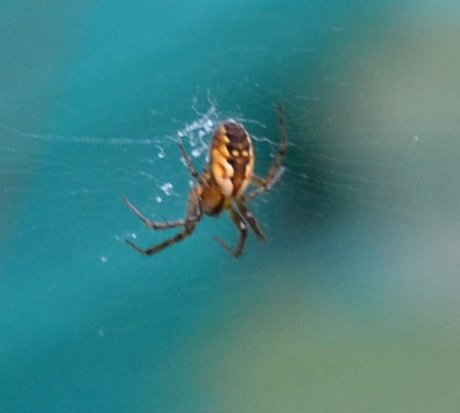
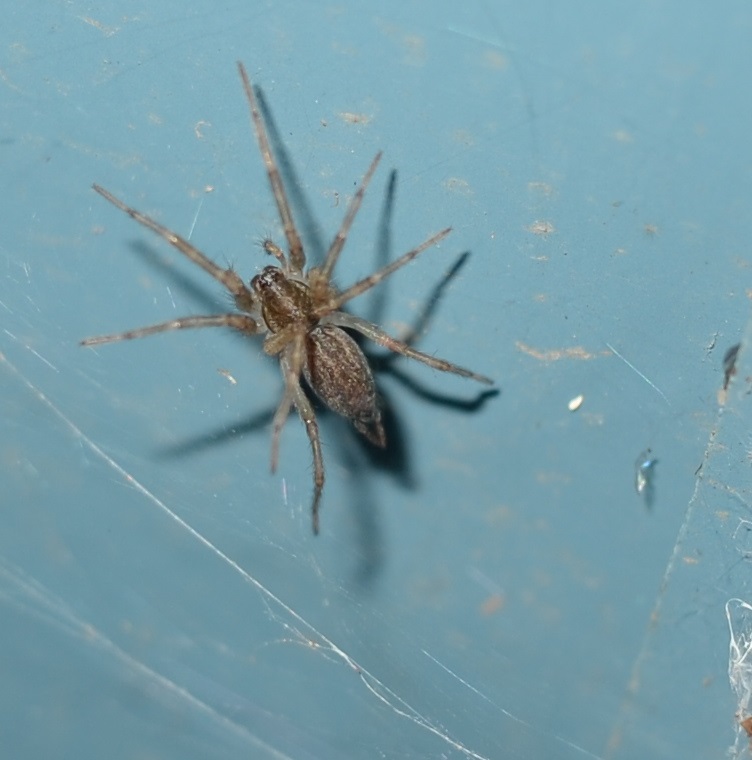
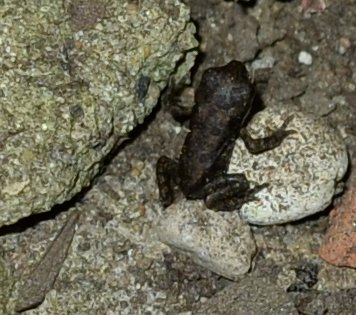
Well, it is time to say good-bye until next week. Have a wonderful week and I hope you may look at some small creature and say to yourself,
if not "How lovely", "Those things are nicer than they used to be".
Back to July 19
On to August 2
Back to 2015 menu
Back to main menu
copyright Martha O'Kennon 2015









 7 19 15 2.jpg)




.jpg)










 in cone 7 20 15.jpg)

 ;
;














 7 19 15 4.jpg)
 7 19 15a.jpg)








 7 22 15.jpg)







